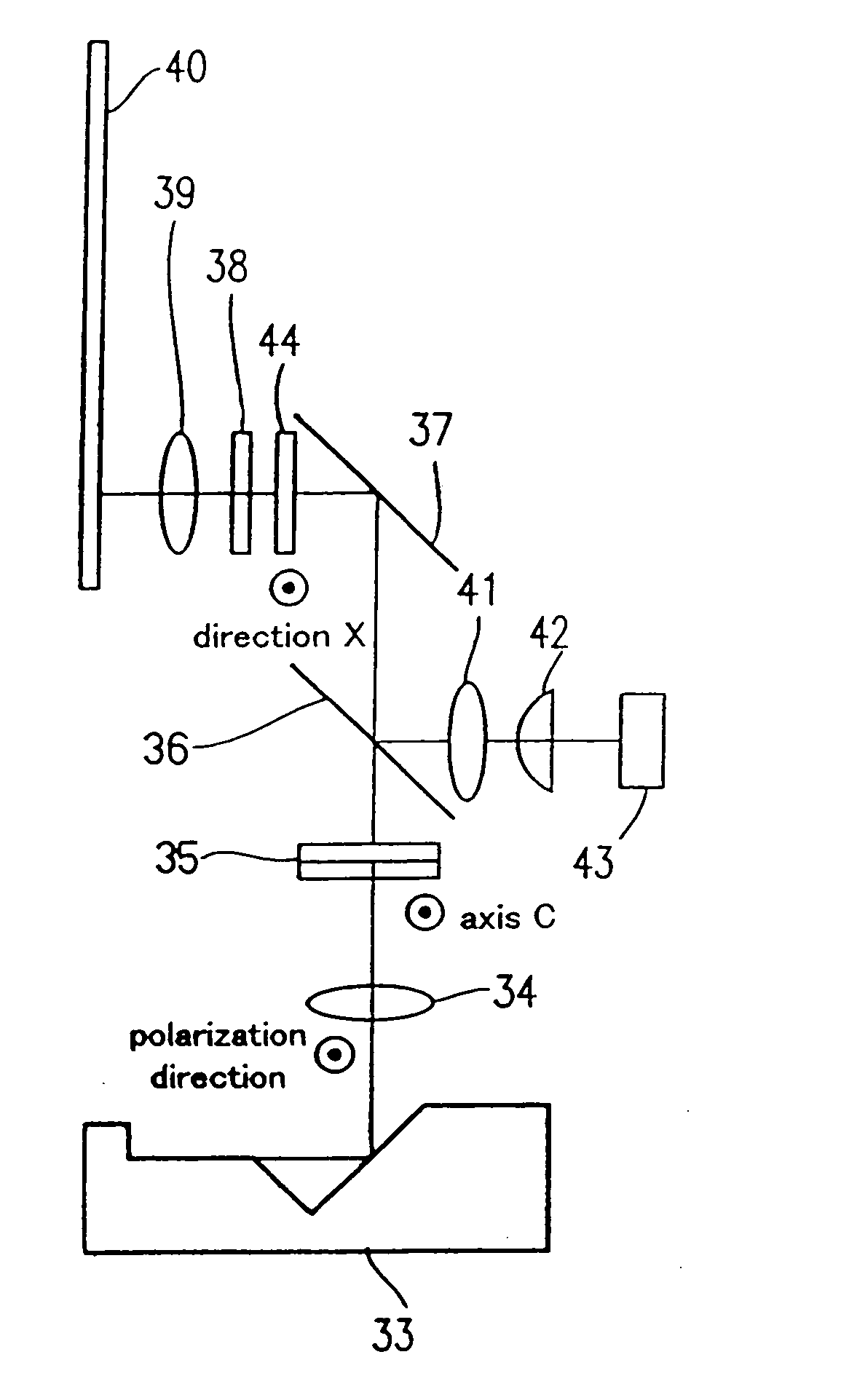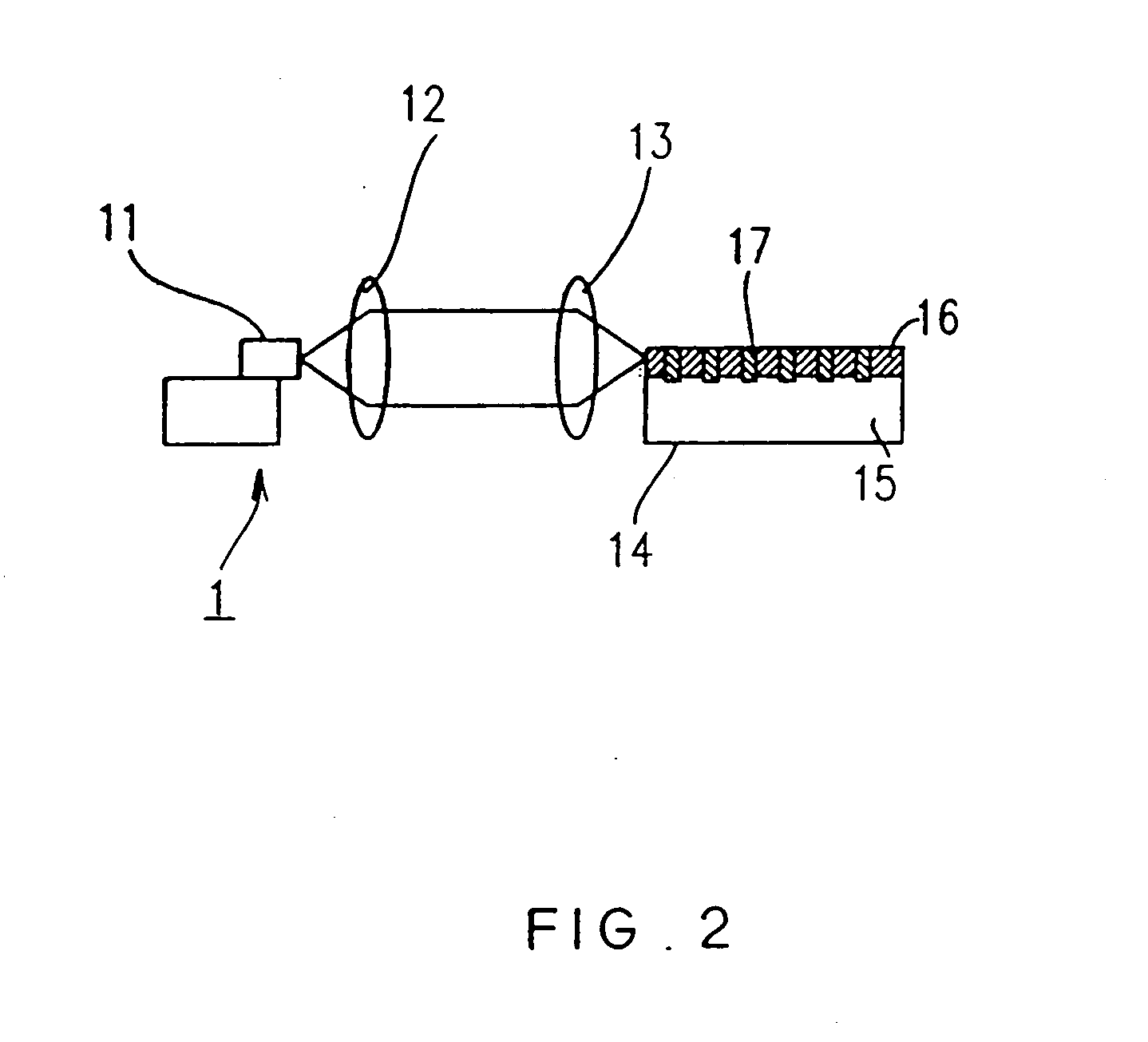Optical pickup, optical information recording/reproducing apparatus using the same, and phase variable wave plate used in the pickup and the apparatus
a technology of optical information and pickups, applied in combination recording, data recording, instruments, etc., can solve the problems of inability to achieve sufficient reproducing signals, difficulty in numerical aperture na of the objective lens larger than the current value of 0.6, and inability to achieve cd-r. , to achieve compatibility, stable signal detection, and simple configuration
- Summary
- Abstract
- Description
- Claims
- Application Information
AI Technical Summary
Benefits of technology
Problems solved by technology
Method used
Image
Examples
first embodiment
[0068] First Embodiment
[0069] In the present embodiment, an optical pickup that is provided with coherent light sources respectively emitting lights in two wavelength regions of a blue region and a red region and has an optical detection system using a polarizing hologram element and a wave plate is described.
[0070]FIG. 1 shows a schematic diagram of the optical pickup in accordance with a first embodiment of the present invention.
[0071] The present embodiment uses a SHG blue laser unit 1 using a second harmonic generation (SHG) technique as the coherent light source in the blue region. FIG. 2 shows a configuration of the SHG blue laser unit 1. The SHG blue laser unit 1 includes a near infrared semiconductor laser and an optical waveguide wavelength-converting element.
[0072] In the configuration shown in FIG. 2, a distributed Bragg reflecting (DBR) semiconductor laser 11 in which the wavelength can be varied is used as the near infrared semiconductor laser. The DBR semiconductor ...
second embodiment
[0100] Second Embodiment
[0101] In the present embodiment, an optical pickup using a laser unit in which a plurality of coherent light sources emitting lights with different wavelengths are mounted on the same substrate (submount) is described.
[0102] Specifically, in the present embodiment, a laser unit in which a GaN blue semiconductor laser chip (wavelength of 405 nm), an AlGaInP red semiconductor laser chip (wavelength of 650 nm) and an AlGaAs near infrared semiconductor laser chip (wavelength of 790 nm) are mounted on a Si-submount is described. FIG. 4 shows a schematic diagram of the optical pickup in accordance with the present embodiment, and FIG. 5 shows a schematic diagram of a laser unit used therein.
[0103] As is shown in FIG. 5, the GaN blue semiconductor laser chip 45, the AlGaInP red semiconductor laser chip 46 and the AlGaAs near infrared semiconductor laser chip 47 are mounted on the Si-submount 45-4. The blue semiconductor laser chip 45 (wavelength of 405 nm) that p...
third embodiment
[0126] Third Embodiment
[0127] In the present embodiment, an optical pickup in which lights emitted from a plurality of coherent light sources can be coupled by a dielectric multi-layer film mirror as a light coupling member and focused on an optical disk by a single objective lens is described. Generally, light transmitted and reflected by a plurality of optical components is affected by aberration of the optical components. A configuration in accordance with the present embodiment is effective in solving this problem.
[0128]FIG. 9 shows a schematic diagram of the optical pickup in accordance with the present embodiment. As is shown in FIG. 8, the optical pickup of the present embodiment has a GaN blue semiconductor laser unit 57 (wavelength of 405 nm), an AlGaInP red semiconductor laser unit 58 (wavelength of 650 nm) and an AlGaAs near infrared semiconductor laser unit 59 (wavelength of 790 nm) in which photo detectors are integrated respectively. Lights emitted from these laser un...
PUM
 Login to View More
Login to View More Abstract
Description
Claims
Application Information
 Login to View More
Login to View More - R&D
- Intellectual Property
- Life Sciences
- Materials
- Tech Scout
- Unparalleled Data Quality
- Higher Quality Content
- 60% Fewer Hallucinations
Browse by: Latest US Patents, China's latest patents, Technical Efficacy Thesaurus, Application Domain, Technology Topic, Popular Technical Reports.
© 2025 PatSnap. All rights reserved.Legal|Privacy policy|Modern Slavery Act Transparency Statement|Sitemap|About US| Contact US: help@patsnap.com



